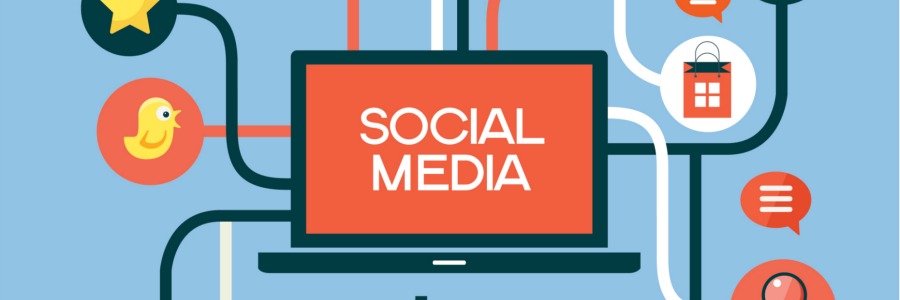 In today’s competitive business world, it’s imperative that you have a thorough understanding of who your visitors are and what are their expectations. If you’re looking for a powerful analytical tool for your company’s website, Google Analytics one of the best options in the market. Yet trying to understand Google Analytics and its strategic use can make your head spin. If you’re just starting out, here’s an overview of Google Analytics and its key metrics that are noteworthy.
In today’s competitive business world, it’s imperative that you have a thorough understanding of who your visitors are and what are their expectations. If you’re looking for a powerful analytical tool for your company’s website, Google Analytics one of the best options in the market. Yet trying to understand Google Analytics and its strategic use can make your head spin. If you’re just starting out, here’s an overview of Google Analytics and its key metrics that are noteworthy.
What exactly is Google Analytics?
Google Analytics is a free website analytic product offered by Google. It is an application that collates visitor data from your website and provides basic statistics and analytical tools for search engine optimization (SEO). The data is used to generate reports that give you insights as to how your visitors are engaging with your website.
With Google Analytics, you can analyze your traffic to discover whether your target market is finding your website, how they’re finding it, and if they’re taking the actions you expect them to take while on your site. By tracking and analyzing your traffic you can increase the engagement and enhance your marketing strategies.
Google Analytics’ Key Metrics
Navigating Google Analytics can be mind-numbing, since you are likely to get lost in its many features, variables, and settings. Check out these basic key metrics that will help you analyze your website traffic.
Unique Visitors
Most people tend to confuse this metric with “Visits”. The Unique Visitors metric can give you an accurate number as to how much real traffic you receive on a daily basis because, unlike the Visits metric, it doesn’t solely rely on cookies to count. This means any of your visitors would be counted once, even if they cleared their computer of cookies.
Pageviews
The Pageviews metric should increase in direct proportion to the numbers shown in Unique Visitors. This metric represents how deep your unique visitors go into your website pages. If the percentage is low, your content may not be engaging enough to encourage visitors to explore the your website further than the home or landing page.
Bounce Rate
The Bounce Rate metric will tell you the percentage of visitors who left your website after viewing only one page. High bounce rates can mean that your website is not appealing to visitors in certain aspects such as the design, content, navigation, and so on. Tracking your website’s bounce rate will quickly help you identify things that are not working well on your website, so you can fix the problem accordingly and ensure you grab visitors’ attention from the first click.
Traffic Sources
This metric shows which sources drive the most and least traffic to your website. Generally there are four types of metrics: Referral, Direct, Organic Search, and Social.
- Referral traffic – These visitors found your site via your off-page marketing efforts, such as backlinks and blog articles on other websites.
- Direct traffic – These visitors are highly targeted, since they type your URL directly into their web browser.
- Organic search – These visitors discover your site after searching a keyword in a search engine, usually from Google.
- Social traffic – These visitors came from social media platforms, such as Facebook, Twitter, and Instagram.
These are the metrics that matter to tracking your website’s visitors. They consist of basic numbers that are easy to understand and interpret. Once you get a handle of these metrics, you can make your way to more advanced metrics that provider deeper level and more accurate insight.
For more tips on how to utilize your business data with Google Analytics, contact our specialists today.







 The threat of being infected by malicious software is part and parcel of spending time on the internet, and no sooner have the antivirus and security software programs released an update or new patch than cyber criminals are scrambling for ways to circumvent them. In addition, as end users become savvier to the tricks and scams used to steal our data, money or identities, new tactics are employed to try and fool us. And that includes Chimera, a new strain of ransomware which has recently been uncovered.
The threat of being infected by malicious software is part and parcel of spending time on the internet, and no sooner have the antivirus and security software programs released an update or new patch than cyber criminals are scrambling for ways to circumvent them. In addition, as end users become savvier to the tricks and scams used to steal our data, money or identities, new tactics are employed to try and fool us. And that includes Chimera, a new strain of ransomware which has recently been uncovered.
 As shown by recent high-profile hacking scandals – targeting everyone from Sony Entertainment to the extramarital-affair-facilitating website Ashley Madison – cyber crime shows no sign of disappearing any time soon. In fact, experts predict that 2016 is going to be an even busier year for cyber criminals, hackers and scammers. So what do you need to know in order to be able to keep your small or medium-sized business safe next year? Here we take a look at what could be in store.
As shown by recent high-profile hacking scandals – targeting everyone from Sony Entertainment to the extramarital-affair-facilitating website Ashley Madison – cyber crime shows no sign of disappearing any time soon. In fact, experts predict that 2016 is going to be an even busier year for cyber criminals, hackers and scammers. So what do you need to know in order to be able to keep your small or medium-sized business safe next year? Here we take a look at what could be in store.
 Big data. You may have heard of it; after all it’s been putting in an appearance at boardroom meetings across the globe for some time now. But what actually is big data? And what does it mean when applied in a business environment? More importantly, what can it do and how can it help your organization to succeed? And getting down to the nitty-gritty, does the term big data actually mean anything – or is it just another empty industry buzz word? The good news is that it’s not, and using big data can actually help drive profit. Read on to learn more.
Big data. You may have heard of it; after all it’s been putting in an appearance at boardroom meetings across the globe for some time now. But what actually is big data? And what does it mean when applied in a business environment? More importantly, what can it do and how can it help your organization to succeed? And getting down to the nitty-gritty, does the term big data actually mean anything – or is it just another empty industry buzz word? The good news is that it’s not, and using big data can actually help drive profit. Read on to learn more.
 Are you making the most of one of your business’s greatest assets? Along with your loyal customers, your team of enthusiastic and hardworking staff, and your tastefully decorated store or office, there is an all-too-often-unsung hero just waiting to help you take your business to the next level: your data. You’ve probably read articles extolling the virtues of data mining, but just how does a small or medium-sized organization actually use data to grow their business?
Are you making the most of one of your business’s greatest assets? Along with your loyal customers, your team of enthusiastic and hardworking staff, and your tastefully decorated store or office, there is an all-too-often-unsung hero just waiting to help you take your business to the next level: your data. You’ve probably read articles extolling the virtues of data mining, but just how does a small or medium-sized organization actually use data to grow their business?
 Natural disasters have increased exponentially in the last few years – something that has resulted in a number of small and medium-sized business owners turning to business interruption insurance for protection. Covering many scenarios that regular business insurance simply ignores, adequate protection can be the make-or-break factor when it comes to surviving a natural or manmade catastrophe.
Natural disasters have increased exponentially in the last few years – something that has resulted in a number of small and medium-sized business owners turning to business interruption insurance for protection. Covering many scenarios that regular business insurance simply ignores, adequate protection can be the make-or-break factor when it comes to surviving a natural or manmade catastrophe.
 Something known as “state-sponsored cyber attacks” may not be something you have heard of until now. But with both Facebook and Google viewing the problem as serious enough to warn their users about, it seems this is an issue that could be here to stay. And now with Twitter also recently taking steps to alert their users about possible account hacking attempts, this may well be something that many of us should be concerned about.
Something known as “state-sponsored cyber attacks” may not be something you have heard of until now. But with both Facebook and Google viewing the problem as serious enough to warn their users about, it seems this is an issue that could be here to stay. And now with Twitter also recently taking steps to alert their users about possible account hacking attempts, this may well be something that many of us should be concerned about.
 It’s safe to say that malware attacks, phishing scams, and social media engineering practices are going nowhere fast. That means that, whether you are a home user or the owner or manager of a small or medium-sized business, if you choose to ignore safer online security practices you are putting your identity and the security of your company at serious risk. But what are big providers like Google doing to stop cyber threats in their tracks? After all, surely the onus is on them to provide a service that is secure as it possibly can be?
It’s safe to say that malware attacks, phishing scams, and social media engineering practices are going nowhere fast. That means that, whether you are a home user or the owner or manager of a small or medium-sized business, if you choose to ignore safer online security practices you are putting your identity and the security of your company at serious risk. But what are big providers like Google doing to stop cyber threats in their tracks? After all, surely the onus is on them to provide a service that is secure as it possibly can be?